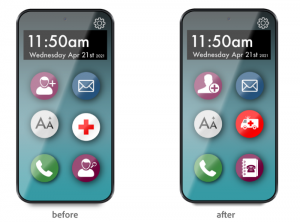If you ask any designer out there no one would ever admit that they influenced with their bias (at least) some initial choice.

Bias, what’s that?
Cognitive Bias (that’s the sonorous name) is a systematic pattern of deviation from norm or rationality in judgment (1).
Wait wait…Systematic!
As human beings, we have a need to know the world around us and predict its “state”.
I refer you to the excellent and concise reading on the characteristics of the various biases by Adam Fard.
Adam Fard also suggests techniques for us to be able to alleviate the impact of bias on our choices https://adamfard.com/blog/designer-biases
But I am also interested in “evaluate” our bias in the team context.
Admit we have a bias is the first step to being more “objective” as designers.
This awareness alone helps us plan and apply the advice of Adam Fard et al.
With experience, I have realized that group work is a fantastic tool to expand knowledge and make up (with group work) for lack of specific knowledge.
Problems that are difficult to tackle alone can be solved more easily by sharing information and taking advantage of the knowledge of other team members.
What does this have to do with our BIAS?
Quantitative and qualitative research analyses are often discussed in teams, using the most renowned techniques of aggregation, filtering, and analysis.
They are, however, never an exact science.
However, a polarization of the decisions taken by the various team leaders or managers is often inevitable. Some choices are “forced” by other needs losing sight of the objective of the research and risk forcing decisions.
Even in group dynamics, unfortunately, as human beings, we are influenced by someone or we influence others in decisions in the name and on behalf of “who” we are.
In short: we have to defend the project from our EGO or someone else’s ego.

Luca’s moral? The advice?
Evaluate the data yourself first and then compare and discuss with teams’ one.
No technique alone can solve the problem 100%, but a prior evaluation by ourselves allows us to be alone with ourselves and to strip ourselves of our EGO. Alone we can easily reflect without influences or others’ bias.
On the other hand, the company must give free rein to Designers to make decisions as data-driven as possible and not influence with “we have to do it this way otherwise….”.
Often there is another way (that we didn’t even imagine).
Data speaks a foreign language that we have to understand and investigate
The example
From my experience, one of the most recent examples I can recall is the study I did for an app for elder people (https://www.lucapeluso.com/easy-launcher/).
I guarantee you, my designer friends, that the world of the elderly puts you to the test!
Many user journey techniques (often explained with eCommerce and travel agency cases) are almost useless for “personas” with limited or compromised accessibility.
They indeed very often don’t take decisions upon theriselves but with help of other people.
I have discovered and am discovering things that I “thought” I knew and instead didn’t even imagine.
Icons that for the normal user are considered common for the elderly are “Martian”.

The launcher required several rounds of tests even to establish the “EMERGENCY BUTTON” (spoiler alert): in the end, the ambulance was the winner.
We are not the user, we are not the user (let’s always repeat that!)
TEST! and…be hon(t)est!
Reference:
(1) Haselton MG, Nettle D, Andrews PW (2005). “The evolution of cognitive bias.”. In Buss DM (ed.). The Handbook of Evolutionary Psychology. Hoboken, NJ, US: John Wiley & Sons Inc. pp. 724–746.
Ego man image:
Foto di Schäferle da Pixabay
Thinking Statue:
Photo di photosforyou da Pixabay